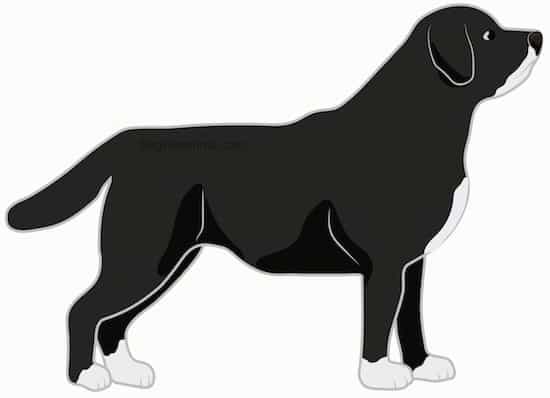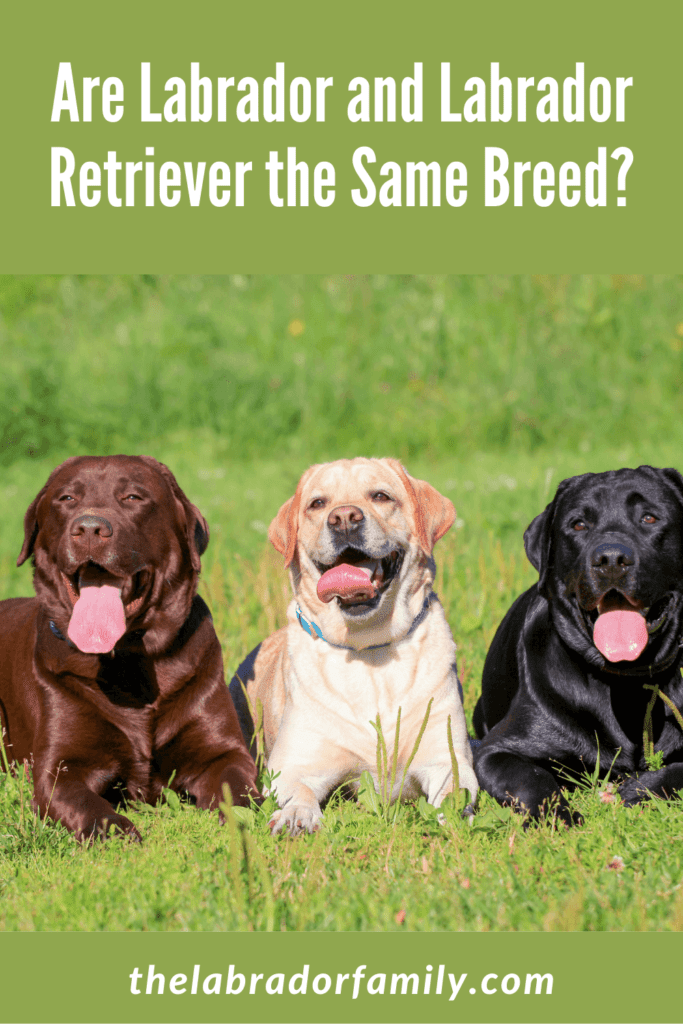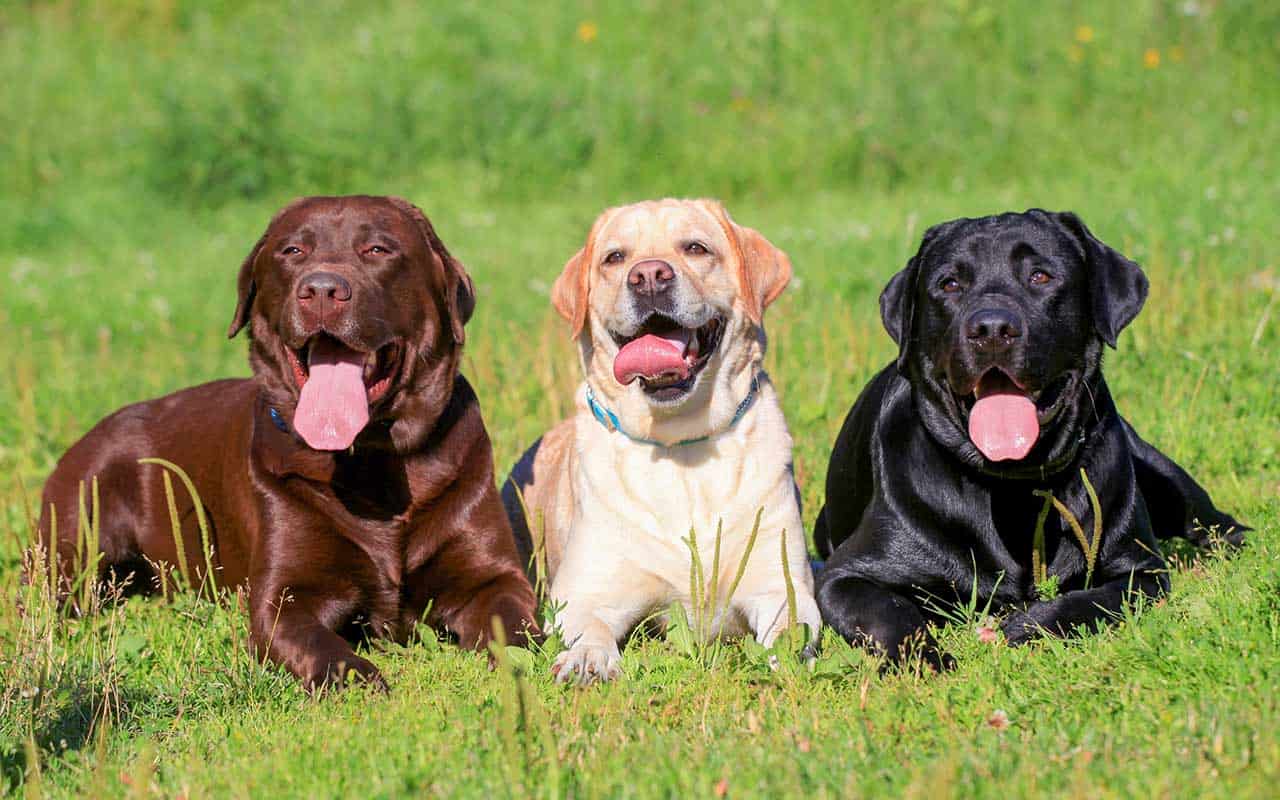No matter how much of a dog lover you are, you may not be incredibly familiar with all the different breeds and varieties out there. For example, you may have had the dog-nerd experience of finding yourself asking if there is really any difference between a Labrador and a Labrador Retriever.
The Labrador Retriever, the Labrador, and the Lab are all the same dog breed. Typically, the more formal the situation, the longer the form of the name that’s used. There is, however, a distinction between the English and the American varieties of the Labrador.
Keep reading to learn more about the origins and characteristics of today’s Labrador breed, in addition to the differences between the English Labrador and the American Labrador. We conclude with some of the accomplishments of the world’s most respectable Labradors.
A History of the Labrador Retriever, A.K.A. Labrador
How can the Labrador Retriever have originated from Canada but have been designated this name we know today not from Canada, but England?
Here we unravel some of the biggest pieces of the puzzle surrounding the history of today’s Labrador Retriever.
– The Canadian St. John’s Water Dog

While you may know that the Labrador Retriever has its original roots in Newfoundland, Canada, you may have never heard of the St. John’s Water Dog.
The St. John’s Water Dog is the “original” version of the Labrador Retriever we know today.
Canadian fishers created the St. John’s Water Dog by crossing Newfoundland breed dogs with smaller-sized water dogs to help with their day-to-day activities in the icy cold waters.
– The Early English Labrador Retrievers
In the 1820s, the St. John’s Water Dog became very popular with the English people, who decided to take some of the puppies back home to England.
The third Earl of Malmesbury deemed the imported breed with the name we know today, the Labrador Retriever.
Together with a few breeders in England, the Malmesbury family kept the Labrador Retriever breed alive. Surprisingly, it was nearing extinction in the late nineteenth century despite its popularity as an excellent hunting dog.
Back in Canada, the St. John’s Water Dog became extinct due to the excessive taxes imposed on keeping female versions of the breed.
In 1903, England finally recognized the Labrador Retriever as an official breed of dog. The Labrador Retriever was later imported to the United States, in the 1920s, to pioneer what we’ll later distinguish as the American Labrador Retriever.

An Overview of Labrador Characteristics
Here, we detail some of the most essential physical attributes of Labradors, as well as some important temperamental considerations to keep in mind.
– Physical Appearance
Overall, the Labrador Retriever is an athletic breed and is quite good at swimming, likely owing to its ancestry from the Canadian water dogs. Below are some of the essential and most easily recognized physical features of Labrador Retrievers.
The Coat
The official coat colors of Labradors can be any of black, cream (yellow), or brown. However, there does unofficially exist a rare silver coat variety that some claim to be a cross between the Labrador Retriever and the Weimaraner breeds.
The coat hairs are medium short, with straight hairs planted closely together, making Labradors amongst the densest-coated of all dog breeds. Of course, this is great to have in extremely cold environments like those icy Canadian waters!
The Face
For the black-coated and cream-coated Labradors, it’s expected that the eye color will be a shade of brown ranging from honey brown to dark brown. For the brown-coated Labradors, the eye color can be either the same as for the black and cream varieties, or it may be a grayish hazel color instead.
For the nose color, typically, it’s expected that the black-coated and cream-coated Labradors feature black noses and the brown-coated Labradors feature brown noses.
– Activity Levels
Labrador Retrievers were bred to serve people, and their temperament reflects this important fact. It would be best if you allow your Labrador, at any age, to accompany you on the smallest of tasks inside and outside of the home.
Conversely, being isolated for extended bouts of time goes against the Labrador breed’s desire to help people and enjoy their companionship.
Labradors suffer when they are separated from their owners, and, ironically, so do their owners in the aftermath of an unhappy Labrador!
The Distinctions Between English vs. American Labradors
People in England have different ways of life relative to people in America, as each also does relative to other parts of the world. It’s then no surprise that Labradors can very well have different roles to play depending on where they are located.
Here, we examine contrasting features across the English and American versions of the Labrador breed.
– Features of English Labradors
The English people valued Labradors for their calm and engaged demeanor. This led to what’s now recognized as the English Labrador Retriever.
In England, Labradors were most useful when they accompanied hunters of game meat such as rabbits. Labradors in England also frequently won prizes in dog shows due to their noble appearance.
Sometimes, English Labradors are called Bench Labradors because of their tendency to sit and watch other people and dogs.
– Features of American Labradors
American people valued Labradors for their excellent ability to retrieve and their innate capability to sustain high energy levels. This led to what is now recognized as the American English Labrador.
In the United States, Labradors were most useful when they accompanied hunters on vast fields and when they simply worked outdoors. This is primarily what catalyzed the evolution of the American Labrador into leaner and more athletic versions of the Labrador breed that arrived from England.
Occasionally, American Labradors are called Field Labradors because of their unique abilities to assist hunters or do some other type of work in fields.
Some Famous Labradors of the World
Here are some of the most accomplished Labradors of all-time, renowned for feats of heroism by their own right, or, perhaps, for having a famous owner.
– Famous Labradors in England
Endal was an English service dog, renowned for many accomplishments, including being the first dog to work a pin and chip money card and placing a person who had passed out into the recovery position without any training.
This and other feats have won Endal countless awards such as the “PDSA Gold Medal,” which recognizes outstanding bravery and devotion to duty in animals, and the “Dog of the Millennium.”
Buccleuch Avon, Malmesbury Tramp, and Malmesbury June, corresponding respectively to the Labrador dogs of the Duke of Buccleuch and the Earl of Malmesbury, are still considered today to be the three most important dogs in the founding of the modern Labrador breed.
– Famous Labradors in the United States
Jake was an American black Labrador and a “world-class rescue dog” who became wildly popular across the country after being seen digging through white-hot debris of the 9/11 attacks in search of possible survivors.
He also served as part of the rescue team after the 2005 Hurricane Katrina devastation. Jake became one of the few elite government rescue dogs despite being abandoned as a puppy with a broken leg and a dislocated hip.
Buddy and Seamus are both Labradors belonging to former U.S. president Bill Clinton.
– Famous Labradors in the Rest of the World
Frida was a Mexican rescue dog who saved 12 lives and located another 40 bodies across 53 rescue operations in several Central American countries. In 2019, her heroic feats were honored with a retirement celebration by the Mexican Naval Canine Unit, and she continues to remain in our hearts through special murals and a bronze statue.
Sabi was an Australian explosives detection Labrador who was miraculously found safe and well in 2009 after being missing in action (MIA) for 14 months in Afghanistan.
Conclusion
So, in addition to confirming that the Labrador and the Labrador Retriever are indeed the same breed of dog, we have learned about some of the most important facts surrounding the development of the breed into the multifarious varieties we all love to appreciate.
Readers Also Liked:



